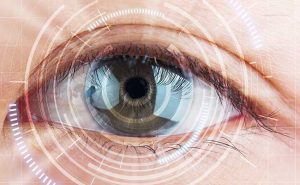
Dr. Salib offers a laser-assisted alternative to conventional cataract surgery. Call the Orange County Eye Institute in Laguna Hills An estimated one in every six Americans aged 40 or older has vision affected by a cataract, and more than half by the age of 80. Those in the Laguna Hills area have the option of advanced laser treatment, as well as conventional cataract surgery, in the care of Dr. George Salib at the Orange County Eye Institute. Inside the eye is a clear lens. Its shape refracts or bends rays of light so that they focus on the retina at the back of the eye. When the lens becomes cloudy, light rays scatter, distorting the image you see. The most common cause of cataracts is aging, as normal proteins in the lens begin to break down. The onset or severity of this situation may be linked to lifetime sun exposure. Other risk factors include hereditary predisposition, diabetes and other medical problems, trauma, radiation therapy, and some medications including corticosteroids. While age-related cataracts usually develop slowly, these conditions are less predictable. Babies and children are subject to many of the same risk factors as adults, but sometimes, cataracts develop quickly and spontaneously in young eyes. A child’s eyes continue to develop until about age ten, so early detection and prompt treatment of cataracts is especially important. Otherwise, long-term vision impairment can result. Cataracts may trigger “lazy eye” an abnormal and irreversible connection between the eyes and brain. Cataracts are diagnosed through a review of symptoms, a visual acuity test, and physical examination of the eyes. A special microscope called a slit lamp gives the doctor a magnified look at structures in the front portion of the eye by illuminating the cornea, iris, and lens. An ophthalmoscope also helps to reveal signs of cloudiness in the lens. The doctor may put drops in your eyes to dilate (widen) pupils for a closer inspection of the retina. These tests are painless and take only a few minutes. If you are diagnosed with a cataract, you will need to make an informed decision about treatment. Traditional cataract surgery, or phacoemulsification, is a time-tested technique accepted by most insurance plans. The surgeon uses a scalpel to make a small incision at the side of the cornea. Through this slit he creates an opening in the lens capsule and inserts a probe. It emits sound waves that break up the lens. The fragments are then suctioned out of the eye and an artificial intraocular lens (IOL) is implanted. The incision can usually be sealed without sutures. Dr. Salib also offers laser-assisted cataract surgery. A sophisticated imaging device is placed over the eye to determine the exact location, size, and depth of the cataract, and to meticulously map treatment. The lens capsule is opened with the LenSx laser, and ultrasound energy breaks the lens into pieces, which are subsequently removed. After the IOL is implanted, the cornea is sealed. While both methods are sound ophthalmologic solutions, Dr. Salib’s patients enjoy these benefits of laser-assisted cataract surgery: If you think you may have cataracts, please don’t wait. Schedule an appointment with Dr. Salib at the Orange County Eye Institute to learn more about treatment options. The number in Laguna Hills is (949) 441-5444 . What is cataract?
CALL OUR OFFICE FOR MORE INFORMATION
(949) 441-5444 How conventional cataract surgery is performed
Ophthalmologist in Laguna Hills offers a laser- assisted alternative to conventional cataract surgery
Share This Article
Back to Laser Cataract Surgery Page










